Britain Condemns Iran’s Role In Red Sea Attacks
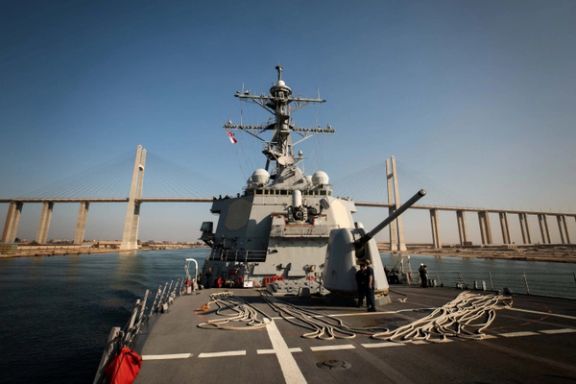
Britain joined the United States in condemning the attacks on commercial shipping in the Red Sea on Monday, blaming Iran for supporting the Houthi militants behind them.

Britain joined the United States in condemning the attacks on commercial shipping in the Red Sea on Monday, blaming Iran for supporting the Houthi militants behind them.
The UK government also stated that it was committed to ensuring safe shipping in the region.
Three commercial vessels came under attack in international waters in the southern Red Sea on Sunday, in attacks claimed by Yemen's Houthi group. It said it had launched drone and missile attacks against two Israeli ships.
"The UK is committed to ensuring the safety of shipping in the region," the British government statement said, adding that the waters were vital for trade and the incidents showed the importance of the Royal Navy's presence there.
The United States said the attacks were "fully enabled by Iran", sentiments echoed by Britain on Monday.
"Iran has long provided military and political support to Houthi militants and it bears responsibility for the actions of its proxies and partners," Britain said.
The US Central command had issued a statement on Sunday describing multiple attacks on vessels by Houthis and saying, “We also have every reason to believe that these attacks, while launched by the Houthis in Yemen, are fully enabled by Iran. The United States will consider all appropriate responses in full coordination with its international allies and partners.”
Iranian government IRNA news website on Monday dismissed the British statement, saying Iran is not interfering in the Gaza war and has no proxy forces in the region. However, Tehran always speaks about its “Axis of Resistance”, which includes the Houthis, the Lebanese Hezbollah, Iraqi Shiite militias and Hamas, aiming to destroy Israel and expel the US from the region.
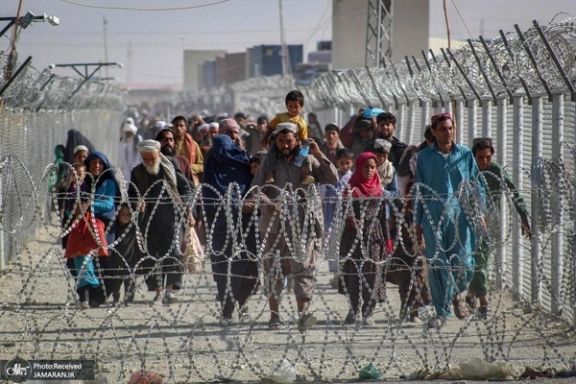
Amid tensions over the presence of millions of Afghans in Iran, the Supreme National Security Council (SNSC) has banned them from nearly half of all provinces.
Announcing the news on Saturday, Hamzeh Soleimani, director general for foreign nationals and immigrants’ affairs of the office of the governor of Kermanshah in western Iran told the semi-official Iranian Students News Agency (ISNA) that the ban includes Kermanshah Province.
Since March, authorities in Kermanshah Province have canvassed construction sites, green houses, horse stables and cattle farms where Afghans are usually employed, on nine different occasions, to identify, detain and expel “illegal foreign nationals”, Soleimani said.
The ban which follows protests and unrest in Meybod in the eastern Yazd Province and demands for the expulsion of Afghans, appears to apply to all Afghan citizens in 16 provinces irrespective of their immigration status.
Afghans, often referred to simply as ‘foreign nationals’ by officials and the media, make up the majority of immigrants in Iran.
A significant number of Afghan workers, as well as some employers who had hired them were arrested during the searches in Kermanshah Province, Soleimani said and urged people to report the employment of Afghan citizens in farms and construction sites to the authorities.
Iranian media say the ban includes the northwestern and western provinces of East Azarbaijan, West Azarbaijan, Ardabil, Zanjan, Hamedan, Kordestan, Kermanshah, Ilam, and Lorestan, as well as the northern provinces of Gilan, and Mazandaran.
The southeastern province of Sistan and Baluchestan, a major channel of Afghan immigration to Iran, and the southern Hormozgan province have also been designated as banned zones for all Afghans.
Only 780,000 Afghans living in Iran have official refugee status, leaving the majority undocumented.
Interior Minister Ahmad Vahidi said in October that identity papers had been issued for more than one million Afghans with plans to include more. Vahidi had said in September that the country was home to an estimated five million Afghans.
Another government official, Mohsen Najafikhah, however, told the parliament in October that “foreign nationals” in Iran number over 8 million, or ten percent of the country’s population.
Some estimates suggest the Afghan population may have reached ten million since the Taliban’s takeover of Afghanistan in 2021.
The rapid growth of the Afghan population in Iran in the past two years has become controversial with some media and politicians alleging that authorities are actively encouraging the growth of the Afghan population and warning about a “threat to national security”.
In the past year Anti-Afghan sentiments have rapidly spread in Iran with some ultra-nationalists opposed to the Islamic Republic campaigning on social media for the expulsion of all Afghans on racial grounds.
On Friday, an angry mob of Iranians in Meybod torched the homes of Afghan citizens in the Afghan quarter of the city, known as Afghanabad, forcing the police and security forces to barricade the area to prevent further violence. Another video posted on X showed Afghans fleeing the city in large groups towards the surrounding desert.
Nearly one in eight of the residents of the city of 90,000 are reportedly Afghans.
The incident occurred following the reported death of an Iranian teenager and the injury of another in a street altercation with Afghans. In response, locals took to the streets, expressing their grievances during Friday prayers and calling for the apprehension of the culprits as well as the expulsion of all Afghans from the city.
According to social media accounts, the city's appointed Friday imam, a Revolutionary Guard commander, and the city's governor, who attempted to pacify the demonstrators, were specifically targeted and assaulted.
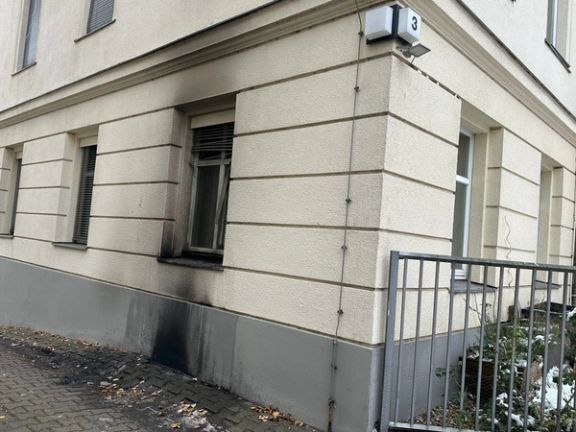
An arson attack has targeted the building of the National Council of Resistance of Iran (NCRI) in Berlin Monday morning, the third such attack on the Mojahedin-e-Khalq's (MEK) political arm this year.
The NCRI, based in Paris, promptly attributed the attack to agents of the Islamic Republic.
Police swiftly responded to the incident, launching an operation in the Berlin district of Schmargendorf, as reported by Bild. Initial findings indicated that a side window on the ground floor had been destroyed, and the assailants, yet to be identified, attempted to set the building ablaze.
During the ensuing investigation, law enforcement discovered evidence including petrol cans and a gas bottle. Members of the council managed to extinguish the fire before it could spread to the interior, avoiding injuries. However, the building sustained material damage.
This is not the first instance of aggression against the resistance movement. In 2019, the same building experienced a fire, prompting an examination of potential political motivations. The ongoing police investigation in the current case seeks to unravel the motives behind this latest attack.
In a statement, the NCRI said the ongoing attacks, including two this year, one in May and another in June at a building belonging to the NCRI supporters in northern Paris, would not intimidate the organization, branding the culprits "terrorists and mercenaries of the Quds Force and the Ministry of Intelligence of Iran".
"As the Iranian Resistance has repeatedly stated, appeasement with the mullahs’ regime and actions such as the release of Assadollah Assadi, a terrorist diplomat responsible for organizing a bomb attack at the Iranian Resistance gathering in Villepinte, Paris in June 2018, have more emboldened this regime in terrorist crimes," it said.
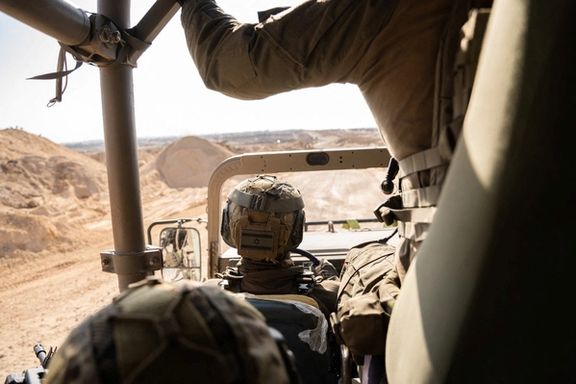
Amid Israel's renewed ground offensive on the Gaza Strip, an Iranian hardline newspaper claims Israelis "still have to see the nightmare of operations larger than October 7."
The firebrand editor of Kayhan newspaper, Hossein Shariatmadari, referenced Khamenei's recent remarks, stating, "Israel is trapped in the quagmire of its attack on Gaza," which was triggered by a surprise invasion of Israel by Hamas on October 7, in which 1,200 mostly civilians were killed and 240 more taken hostage to Gaza.
In spite of the fact half of Gaza is displaced amidst mass destruction from an Israeli retaliation never seen before since Iran-backed Hamas took over the strip in 2007, he said, "Despite all the military assaults and ground incursions into Gaza, Hamas maintains field control." Dozens of Hamas's top commanders have been assassinated and swathes of the strip turned to rubble yet Shariatmadari expressed 'doubt' about a Hamas defeat. Hamas's most wanted live in an extensive underground tunnel network which has also been badly hit by Israeli strikes.
Amidst the comments which mimic regime rhetoric, the Israeli military has issued additional evacuation orders and pledged to strike south Gaza with "no less strength" than the force employed in the north, which has left large areas resembling a moonscape.
Many of Gaza's 2.3 million residents had previously fled to the south following initial orders to evacuate the north in the early days of the conflict.
The Hamas-controlled Health Ministry in Gaza reported a death toll exceeding 15,500 since October 7, with over 41,000 Gazans wounded. While the ministry does not distinguish between civilian and combatant casualties, it noted that 70% of the deceased were women and children.
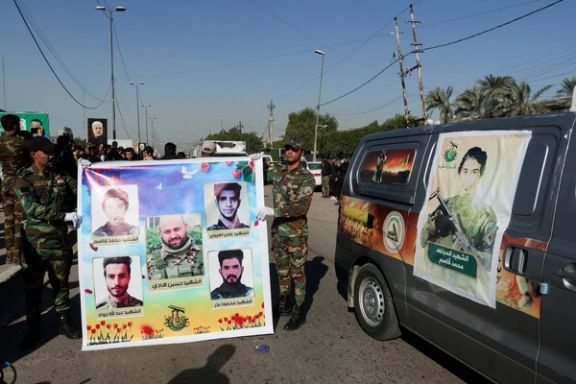
A US air strike killed five Iran-backed Iraqi militants near the northern city of Kirkuk as they prepared to launch explosive projectiles at American forces.
A US military official confirmed a "self-defense strike on an imminent threat" that targeted a drone staging site near Kirkuk on Sunday afternoon.
A statement by the Islamic Resistance in Iraq, an umbrella group representing several Iraqi armed factions with close ties to Tehran, said five of its members had been killed, and vowed retaliation against American forces.The group had claimed several attacks against US forces on Sunday.
Earlier Sunday, the US military official said that American and international forces were attacked with multiple rockets at the Rumalyn Landing Zone in northeastern Syria, but there were no casualties or damage to infrastructure.
Iraqi armed groups have claimed more than 70 such attacks against US forces since October 17 over Washington's backing of Israel in its bombardment of Gaza.
The war, initiated by the Hamas invasion on October 7, resulted in at least 1,200, mostly civilians losing their lives, and an additional 240 taken hostage. Retaliatory attacks have left over 15,000 dead in Gaza, with hundreds of thousands displaced. Israel pounded the enclave to uproot the Islamist group, which has made the war exceedingly bloody hiding deep among the civilian population and underneath the coastal sliver’s non-military facilities.
In November, the US launched two series of strikes in Iraq against Iran-aligned armed groups who had engaged in attacks against American forces. The strikes killed at least 10 militants who were identified both as members of shadowy militia Kataeb Hezbollah and of Iraq's Popular Mobilization Forces, an official security institution composed mainly of Shiite Muslim armed groups.
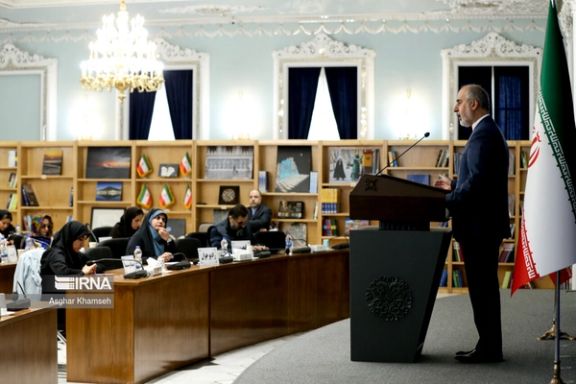
After Iran's Revolutionary Guards confirmed that two IRGC officers were killed in an Israeli attack in Syria, Tehran vows revenge.
Iran’s Foreign Ministry spokesman Nasser Kanaani said Monday that the IRGC forces were in Syria “on an advisory mission,” threatening that "No action against the interests and security of Iran, as well as our advisory forces in Syria, will go unanswered, and this has been proven before."
He did not elaborate on when and where Iran has avenged attacks on its forces as the Islamic Republic usually cheers about attacks on American and Israeli targets by its proxy militia across the region but hardly ever claims responsibility for such strikes.
Since the global outcry against Iran’s support for militant groups has intensified following the onslaught of Israelis by Iran-backed Hamas on October 7, the Islamic Republic authorities, including Supreme Leader Ali Khamenei himself, claim that the regime has no proxy regional forces. Meanwhile, Iran admits that it provides financial and logistic support for the likes of Hamas but claims it has no say in their operations. Additionally, Iran’s Revolutionary Guard has an extra-territorial wing – the Quds (Qods) force, which has either established or funded several such groups.
Iran’s Revolutionary Guards confirmed Saturday that two of its officers were killed in Syria, after Damascus announced that Israeli airstrikes hit a number of targets near the Syrian capital overnight. The IRGC said Mohammad Ali Atai (Ataei) Shoorcheh and Panah Taghizadeh were “martyred” while on an advisory mission to Syria, blaming the “Zionists” for their death.
Israeli airstrikes hit several areas on the outskirts of Damascus early Saturday, causing "material losses," according to Syrian state media. The strikes targeted the southern Damascus suburb of Sayyida Zeinab, where Hezbollah-affiliated forces operate. The Syrian Observatory for Human Rights reported two Syrians and two foreign citizens killed, with five others wounded.
Late in September, the open-source intelligence social media account Intelli Times announced that Taghizadeh was about to arrive in Syria to help Iran-backed forces in the region. Intelli Times also revealed that the officer was part of Unit 340 of IRGC’s Quds Force.
While Israel’s military does not, as a rule, comment on specific strikes in Syria, it has admitted to conducting hundreds of sorties against Iran-backed forces, including Hezbollah fighters, attempting to gain a foothold in the country over the last decade. The recent surge in attacks aligns with the Israel-Hamas conflict that started in October.
Since then, Israel has targeted Syria, impacting international airports in Damascus and Aleppo for over a month, likely thwarting the transfer of weapons from Iran to its proxies in Gaza and on Israel's borders. Iran has played a significant role in supporting Syrian President Bashar al-Assad throughout the 12-year civil war, deploying fighters to tip the balance in Assad's favor. Despite Tehran maintaining what it calls a military advisory role, numerous Iranian Revolutionary Guard members have lost their lives in the Syrian conflict.